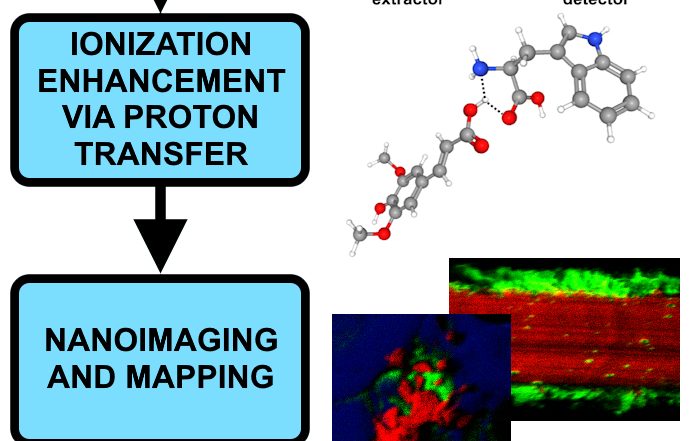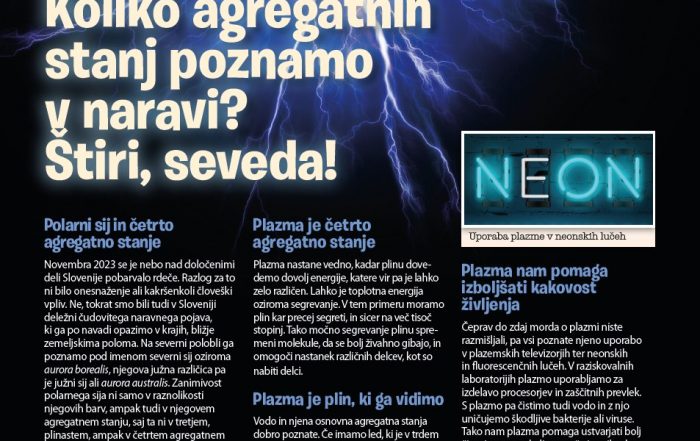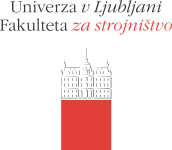Vision
To be a creative group of researchers working in a pleasant and perspective working environment with a high ambition of being a renowned group in the European region and internationally recognized in the field of plasma science and characterization of materials, surfaces and thin films. We create new knowledge and sustainable technological innovations for the future.
Mission
- Scientific excellence in the field of plasma and surface science and related technologies
- Creating a research environment suitable for the development of new interdisciplinary knowledge and sustainable technologies
- Taking care of the socio-economic needs by performing usefulness research and for the transfer of knowledge to the industry, by finding solutions to problems and helping to enhance the growth of the economy
Values
- Ambitious in performing research and investigation
- Motivation, creativity, inventiveness, and efficiency
- Insistence and dedication
- Self-initiative and responsibility
- Flexibility
- Teamwork and dedication
- Self-awareness and open communication
Marie Skłodowska-Curie Postdoctoral Fellowship with Ruđer Bošković Institute, Jernej Ekar
Gregor Primc2025-07-21T11:46:21+02:0021. 06. 2025|Tags: Jernej, marie curie, molecular biology, organic chemistry, postdoctoral fellowship, secondary ion mass spectometry|
Promoting science through Slovenian expert magazine Alternator and youth magazine PIL
Gregor Primc2024-02-05T07:54:16+01:0005. 02. 2024|Tags: Alternator, gaseous plasma, PIL, promoting science, viruses, water|
New doctor at the F4 department!
Gregor Primc2024-01-03T15:40:34+01:0003. 01. 2024|Tags: Domen, heterogeneous recombination, metal oxides, PhD defence, success|
Research and industrial topics
- Pure and applied surface science
- Surface characterization using ToF-SIMS, XPS, AES, AFM and WCA techniques
- Depth profiling
- Reactions on surfaces and interfaces
- Micro-analyses
- Surface functionalization/activation
- Surface nanostructuring
- Discharge cleaning and surface passivation
- Selective plasma etching
- Plasma in the electronic and automotive industries
- Plasma in agriculture
- Plasma for food and packaging
- Plasma in biology and medicine (water cleaning, cardiovascular implants, wound dressings, sterilization, etc.)
- Plasma nanoscience (nanocomposites, complex nanostructures, such as nanowires, nanowalls, nanocones, etc.)
Nuclear fusion is one of the most prospective sources of carbon-free energy for the future. We have been conducting fusion-oriented research since 2005. The research is carried out within the EUROfusion Consortium. We are members of JET and EUROfusion MST1 campaigns. Currently we are performing research on the formation of ammonia upon nitrogen seeding and interaction of hydrogen plasma with liquid materials.
There are two definitions of gas temperature (T): from the kinetic energy of gaseous molecules following the equation p = nkBT and from the Boltzmann distribution of excited states following the equation N/N0 = factor e(-Wa/kBT), where p is gas pressure, n density of molecules, kB Boltzmann constant and N/N0 the concentration of molecules with excitation energy higher than Wa. The term T in the equation p = nkBT is a measure of kinetic energy of gaseous molecules and T in N/N0 = factor e(-Wa/kBT) indicates internal energy. Both Ts are equal upon equilibrium conditions. In non-equilibrium gases, however, the temperatures differ significantly. In fact, kinetic temperature may be different for different types of gaseous particles (electron temperature is usually much higher than kinetic temperature of other particles), and excitation energy usually varies significantly in different excited states. Rotational temperature is often close to kinetic temperature of molecules; vibrational temperature is usually several times higher than rotational temperature and the dissociation fraction is often much higher than the value calculated from N/N0 = factor e(-Wa/kBT) using vibrational temperature and Wa = dissociation energy. Our group is specialized in gases of low ionization fraction and very high dissociation fraction. Separation of different temperatures is beneficial for low-temperature processing of materials since thermal effects are separated from chemical reactivity of gas. In a typical plasma suitable for treatment of heat-sensitive objects kinetic and rotational temperatures are close to room temperature, the dissociation fraction is a few 10%, while the ionization fraction is adjusting according to specific needs.
Our non-thermal gaseous plasma typically consists of electrons with temperature of several 10,000 K, while kinetic temperatures of all other species (molecules, molecular fragments, free atoms and charged particles) remain close to room temperature. Positively charged ions assume significant kinetic energy upon passing the sheath between bulk plasma and any material facing plasma. When materials are kept at a floating potential, kinetic energy of positive ions impinging a surface is roughly 10 eV. If samples are biased, the kinetic energy may be much higher, typically between a few 100 and 1,000 eV. The rotational temperature of gaseous molecules is close to room temperature, the vibrational between a few 100 and several 1,000 K, the fraction of molecules in metastable states depends on the peculiarities of the plasma reactor, the dissociation fraction of simple molecules is between 0.001 and almost 1, and the ionization fraction between about 10-6 and 10-3.
Afterglows are characterized by low density of charged particles. There are two types of afterglows: temporal and flowing. Temporal afterglow is achieved by pulsing the plasma source: charged particles quickly neutralize, but molecular radicals persist long after the discharge has been turned off. Flowing afterglow is obtained by passing molecular gas through spatially-confined plasma into a processing chamber. The gas flow should be high to suppress the loss of neutral radicals; typically, we use sub-sonic gas speed (drift velocity about 100 m/s). In both cases, the density of charged particles is negligible; the kinetic and rotational temperatures are close to room temperature, the vibrational temperature is also much lower than in glowing plasma, but the density of free atoms is almost as high as in plasma itself. Afterglows are particularly useful for treatment of heat-sensitive objects since the sample temperature remains low. However, surface chemistry is rich due to the high density of neutral reactive particles.
Plasma is sustained with gaseous discharges. A high enough voltage across molecular gas has to be applied to transform it into the plasma state. Power supplies of voltages between about 500 and 1,500 V are often used for sustaining plasma in low pressure reactors, and between 2,000 and 20,000 V for atmospheric pressure discharges. Our team is specialized in low-pressure plasma of high dissociation fraction and rather low power density. To suppress the loss of radicals by heterogeneous surface reactions reactors have to be made from materials of low recombination coefficients . These materials are dielectrics, so the electrodes are placed outside the plasma chamber. Such configurations are called “electrodeless discharges”, which are only possible using the oscillating electric field. We often use the power supplies operating in the frequency rage between about 100 kHz and 100 MHz (radiofrequency sources) or at 2.45 GHz (microwave sources). Radiofrequency generators are coupled to plasma either in the capacitive or inductive mode. Our team is specialized in inductive mode. At low power and/or elevated pressure the discharge remains in the capacitive mode although it is powered with an inductor. This configuration is known as “inductively coupled plasma in the E-mode”. At higher powers and/or lower pressures the electron density is high enough to make plasma electrically conductive enough for the plasma to act as a low-voltage part of a transformer (the high-voltage part is the coil). When such conditions are met, the plasma is very bright – the configuration is called “inductively coupled plasma in the H-mode”. The transitions between the E- and H-modes are abrupt, and hysteresis is observed: higher power of the RF generator is needed to enable the transition from E- to H-mode than the transition in the opposite direction. A flexible matching network is needed to enable such transitions.
Microwave plasma is ignited at the point of high electromagnetic filed. Once ignited, the electrically conductive plasma does not allow for penetration of the field deep into the plasma due to the skin-effect. The electromagnetic field propagates along the sheath between conductive plasma where electrons gain kinetic energy by changing the direction of oscillation at collisions with gaseous molecules. The best coupling is obtained at conditions where the oscillation amplitude is similar to the electron mean free path.
Atmospheric-pressure plasma can be sustained in the continuous mode with RF of MW discharges, but large gas flow is needed to keep the kinetic temperature low. Namely, practically all discharge power is spent for heating of the gas at atmospheric pressure. Low-frequency discharges are preferred for sustaining gaseous plasma at atmospheric pressure. Our team often uses a noble gas with a small admixture of molecular gas to suppress the loss of low-energy electrons. Plasma sustained with low-frequency discharges (typically 10-30 kHz) is temporally not uniform, but rather in the form of numerous electron streamers of the duration of the order of a microsecond, what is also a typical life-time of plasma particles at atmospheric pressure. We usually use plasma jets of a diameter of a few millimeters in diameter and several centimeters in length. Such confined plasma is useful for rapid treatment of small segments on any product surface. Pulsed DC discharges are used for sustaining plasma streamers in a highly controlled manner.
Diagnostics of non-equilibrium gases has always posed not only a technological but also a scientific challenge. Since we are specialized in gases of high density of molecular radicals and low density of most other species, we have developed our own technique for measuring densities of O, N and H atoms. Our method is based on calorimetry: when a piece of a material of a high coefficient for the heterogeneous surface association of atoms to stable molecules is immersed into gas rich in atoms, the extensive association causes heating of the piece. The heating is proportional to the flux of atoms onto the surface, which in turn is proportional to the atom density in the vicinity of this material. Measuring the power dissipated on the surface thus enables determination of atom density providing the recombination coefficient is known. We measure coefficients for diverse materials for O, N and H atoms. The piece of material should be small enough to prevent significant drain of atoms. Typically, it has an area of about 1 mm2. The most sophisticated probe is made from a metal foil placed at the end of an optical fiber, and the other side of the fiber is connected to a catalyst temperature detector. The metal is heated by a laser and the resultant power needed for sustaining the prescribed temperature is measured. The power is inversely proportional to the atom density. The probe is movable, so the spatial resolution is about 1 mm. The temporal resolution is under a second. Other techniques used for plasma characterization are based on optical emission or absorption spectroscopies.
TBD
Projects
Nanocellulose from eco-farms for optimal enforcement of bioplastics (L2-50078)
Supercapacitors with graphene nanowalls synthesized from waste plastics (L2-50052)
Non-equilibrium plasma processing for superior composite magnets (L1-50007)
Integrated SERvices supporting a sustainable AGROecological transition (AgroServ, Horizon EU)
Promising eco-sterilization of pathogenic fungi on seeds using reactive species in gaseous plasma (BI-JP 21-23-002)
Plasma VUV and UV radiation – a method for successful deactivation of Aflatoxins (L7-4567)
Novel surface modification of dental prosthetic replacements by gaseous plasma (J3-4502)
Nanocellulose from eco-farms for optimal enforcement of bioplastics (L2-50078)
Supercapacitors with graphene nanowalls synthesized from waste plastics (L2-50052)
Removal of selected antimicrobials by plasma-cavitation hybrid technology from water matrices of varying complexity – CAUSMA (J2-4480)
Miniature fiber-optics sensors for free-radical detection in plasma-assisted processes (L2-4487)
Waterborne virus inactivation efficiency of a prototype device combining non-equilibrium plasma and hydrodynamic cavitation (L7-3184)
Innovative procedures for advanced surface properties of medical stainless steel (J3-3074)
Development of safe multi-functional surfaces for catheters to combat biofilms (L2-3163)
Plasma applications for smart and sustainable agriculture (PlAgri, CA19110)
Innovative method for purification of wastewater (L2-2617)
Selected area functionalization of polymeric components by gaseous plasma (L2-2616)
New strategies for fabrication of biomimetic vascular implants (J3-2533)
Carbon nanowalls for future supercapacitors (L2-1834)
Initial stages in surface functionalization of polymers by plasma radicals (J2-1728)
Plasma facing components (PFC, EUROfusion)
Medium-size tokamak campaigns (MST1, EUROfusion)
Liquid metal divertor (LMD, EUROfusion)
Advanced hemocompatible surfaces of vascular stents (L7-7566)
We'd Love To Hear From You!

Fill out the form and our team will be in touch with you promptly. Thank you for your interest!
12345 North West Street
New York City, NY 555555
555.555.5555
info@yourdomain.com
www.yourdomain.com
[contact-form-7 id=”11449″ title=”Contact form 1″]

















